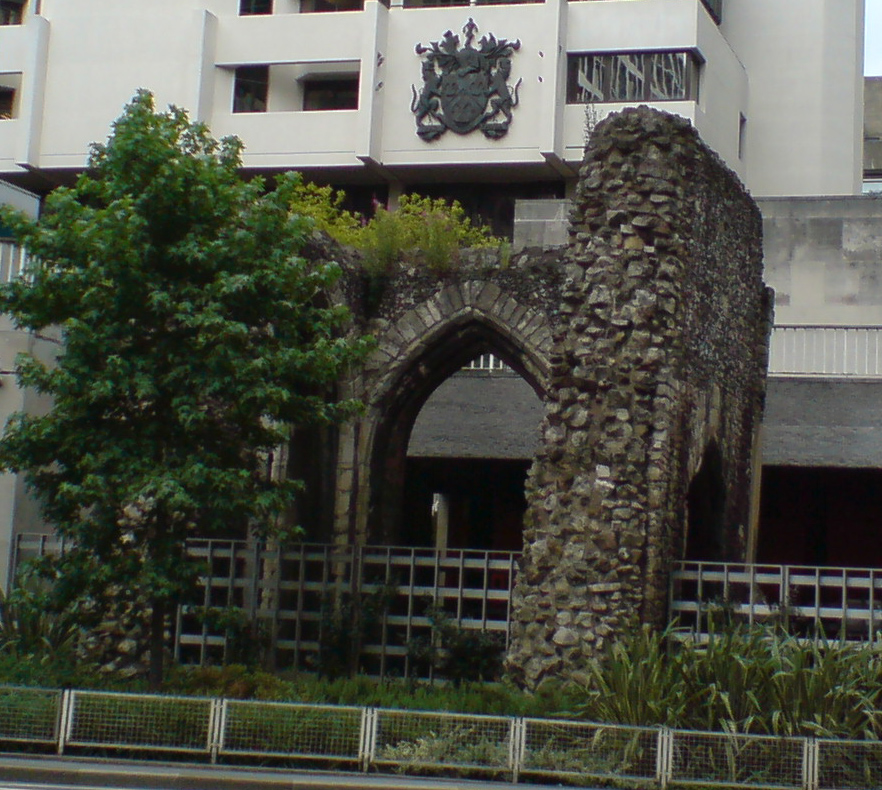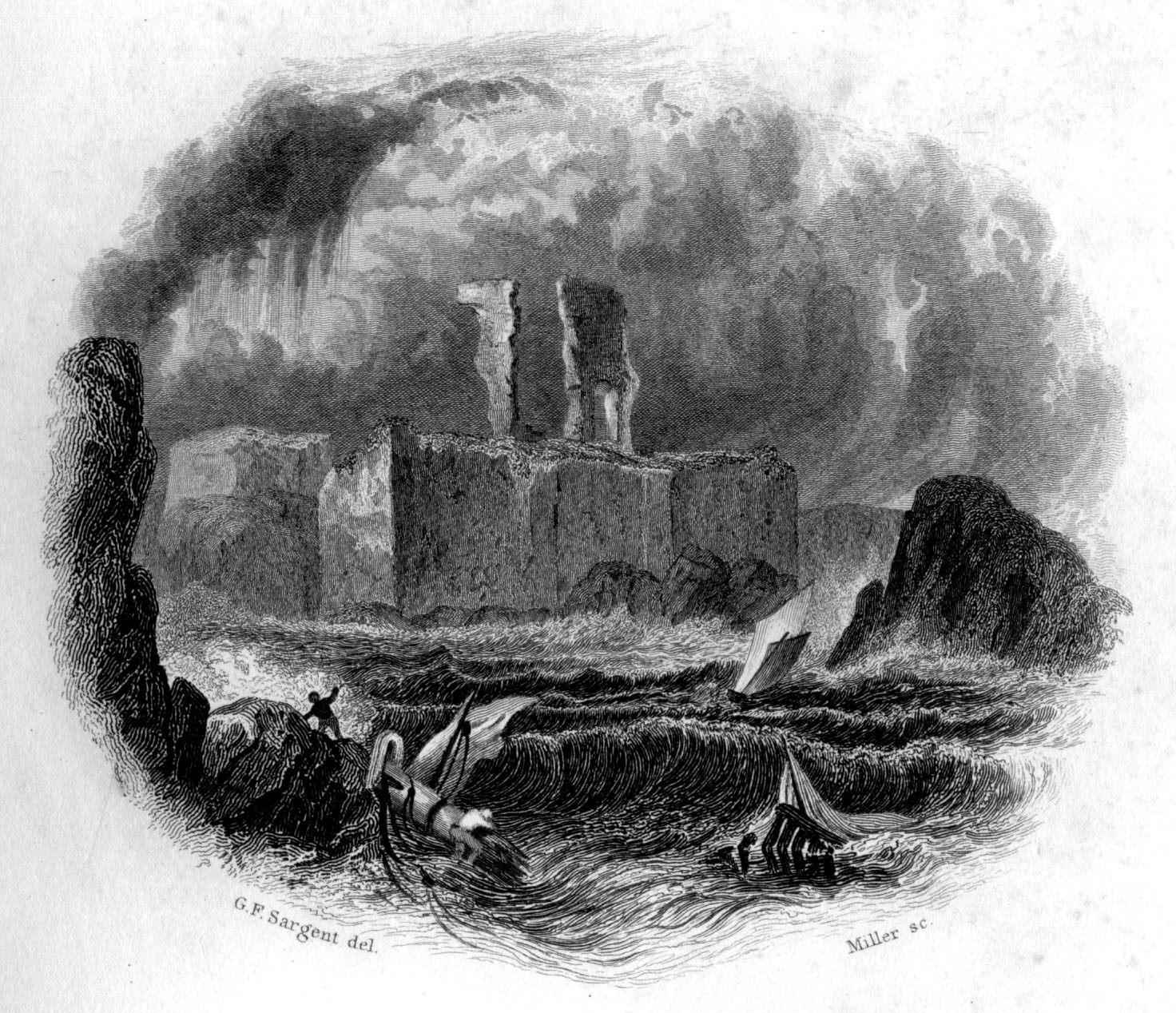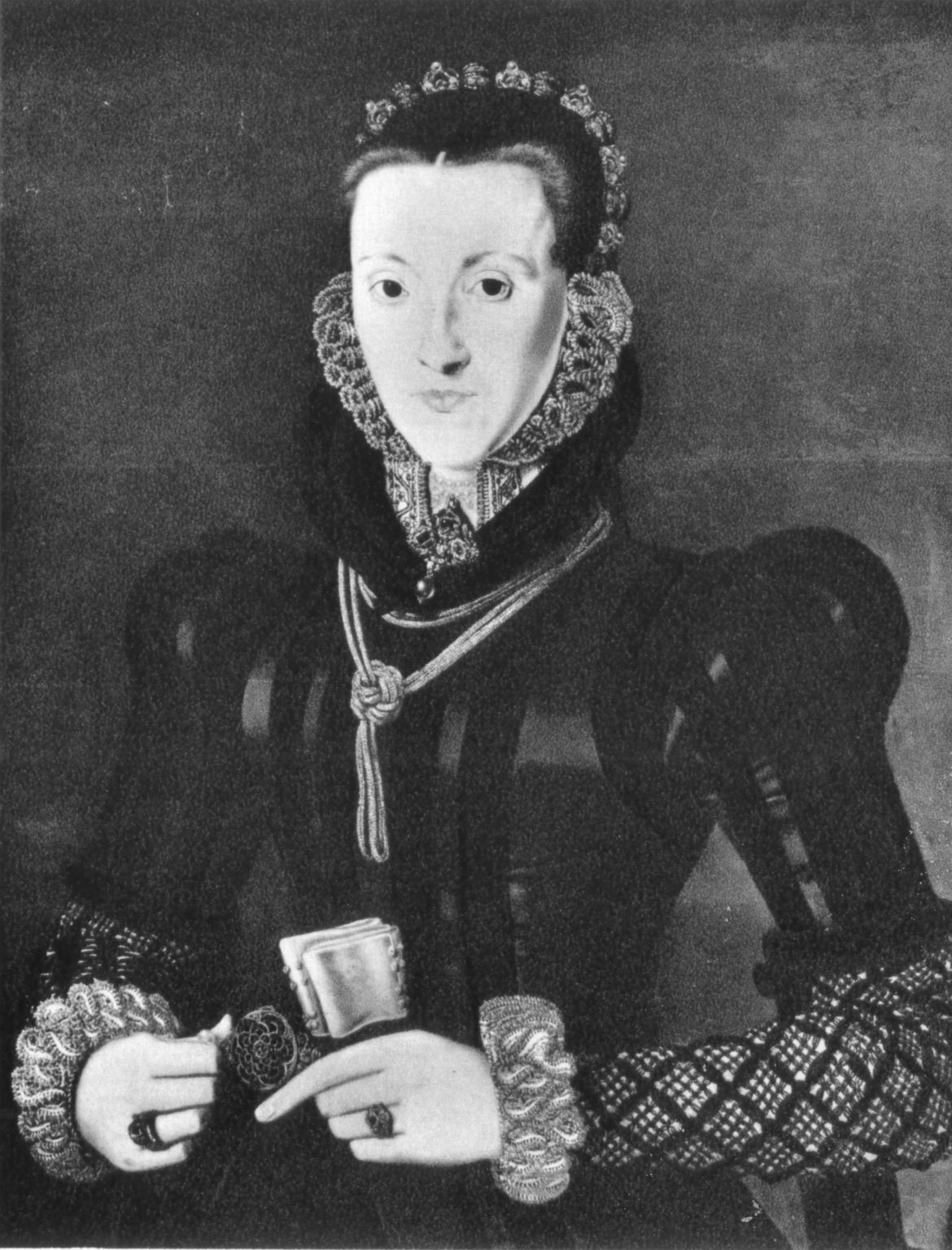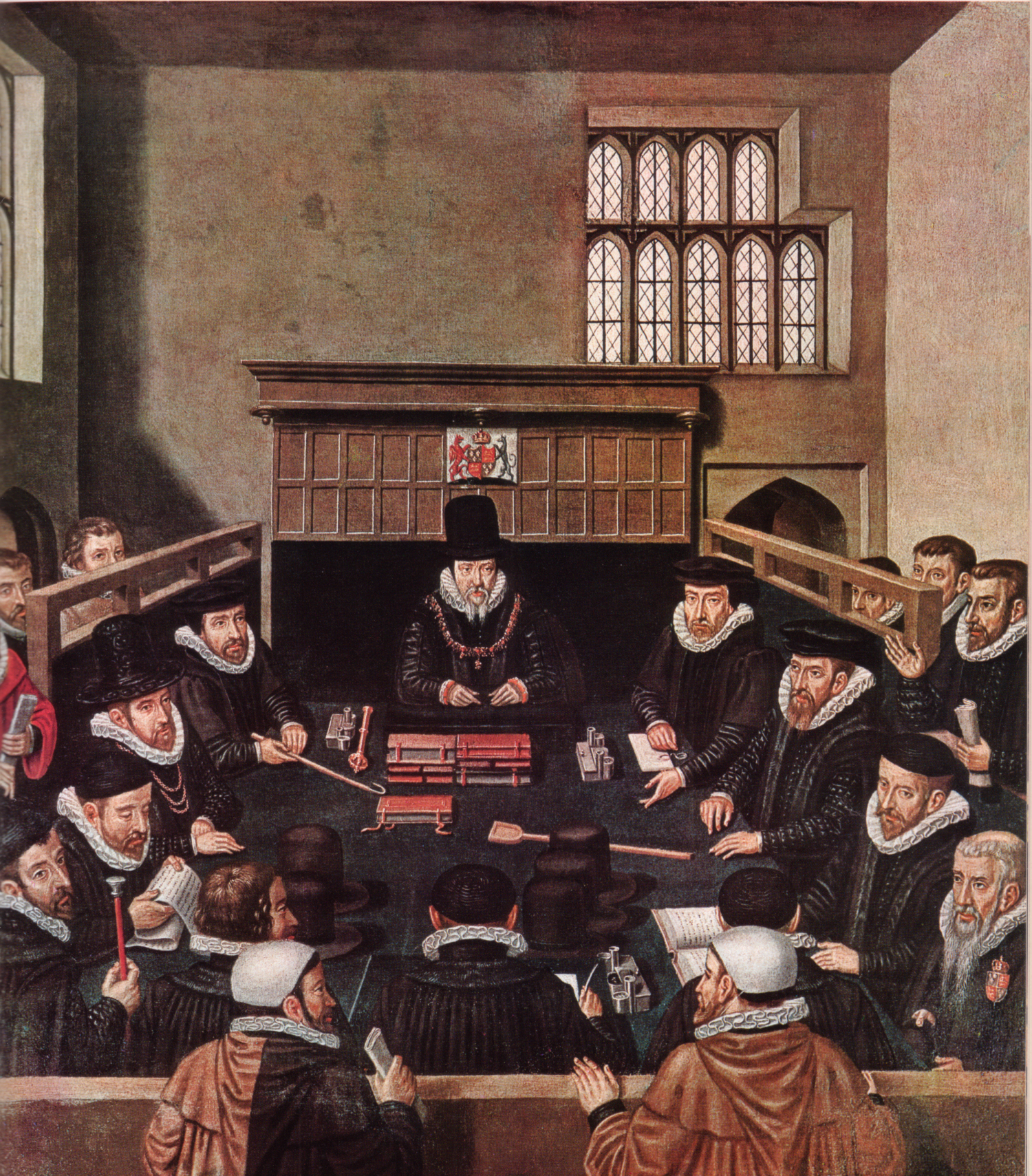|
Sir William Drury
Sir William Drury (2 October 152713 October 1579) was an English statesman and soldier. Family William Drury, born at Hawstead in Suffolk on 2 October 1527, was the third son of Sir Robert Drury (c. 1503–1577) of Hedgerley, Buckinghamshire, and Elizabeth Brudenell, of Chalfont St Peter, Buckinghamshire. He was the grandson of another Sir Robert Drury (c. 1456–2 March 1535), Speaker of the House of Commons in 1495. He was a brother of Sir Robert Drury (1525–1593) and Sir Drue Drury (1531/2–1617). Career Drury was educated at Gonville College, Cambridge. Fighting in France, Drury was taken prisoner in 1544; then after his release, he helped Lord Russell, afterwards Earl of Bedford, to quell a rising in Devonshire in 1549, but he did not come to the front until the reign of Elizabeth I. In 1554 he sat as Member of Parliament for Chipping Wycombe. Berwick and Scotland In 1559, he was sent to Edinburgh to report on the condition of Scottish politics, and five years ... [...More Info...] [...Related Items...] OR: [Wikipedia] [Google] [Baidu] |
Hawstead
Hawstead is a small village and civil parish in the West Suffolk district of Suffolk in eastern England. It is located south of Bury St. Edmunds between the B1066 and A134 roads, in a fork formed by the River Lark and a small tributary. The place-name 'Hawstead' is first attested in the Domesday Book of 1086, where it appears as ''Haldsteada''. The name is thought to mean 'a place of shelter for cattle'. Hawstead Place, previously the seat of the Drury family, is now a farmhouse. Sir William Drury was sheriff and knight of the shire for Suffolk. Lady Drury's Closet (also known as the Hawstead Panels), now in Christchurch Mansion in Ipswich, is a series of painted wooden panels of early 17th-century date. They originally decorated a painted closet adjacent to a bedroom in Hawstead Place. It is believed they were made for Anne Drury, Lady Drury, wife of Sir Robert Drury, who died in 1624. Lt Col Edward Robert Drury, son of Rev Sir William Drury, was the first general m ... [...More Info...] [...Related Items...] OR: [Wikipedia] [Google] [Baidu] |
Member Of Parliament (England)
The Parliament of England was the legislature of the Kingdom of England from the 13th century until 1707 when it was replaced by the Parliament of Great Britain. Parliament evolved from the Great Council of England, great council of Lords Spiritual, bishops and Peerages in the United Kingdom, peers that advised the History of the English monarchy, English monarch. Great councils were first called Parliaments during the reign of Henry III of England, Henry III (). By this time, the king required Parliament's consent to levy taxation. Originally a Unicameralism, unicameral body, a Bicameralism, bicameral Parliament emerged when its membership was divided into the House of Lords and House of Commons of England, House of Commons, which included Knight of the shire, knights of the shire and Burgess (title), burgesses. During Henry IV of England, Henry IV's reign, the role of Parliament expanded beyond the determination of taxation policy to include the "redress of grievances", whi ... [...More Info...] [...Related Items...] OR: [Wikipedia] [Google] [Baidu] |
Bawbee
A bawbee was a Scottish sixpence. The word means a debased copper coin, valued at six pence Scots (equal at the time to an English half-penny), issued from the reign of James V of Scotland to the reign of William II of Scotland. They were hammered until 1677, when they were produced upon screw presses. Issues The bawbee was introduced by James V in 1538, valued at sixpence. These carry his 'I5' monogram flanking a crowned thistle, and a large saltire on the reverse with a central crown. There were also a smaller half bawbee and a quarter bawbee. In 1544, James V's widow Mary of Guise minted bawbees at Stirling Castle, with an 'MR' cipher on the obverse and the cross potent with crosslets of Lorraine on the reverse. The first bawbees of Mary, Queen of Scots, issued by the mint at Holyroodhouse in Edinburgh carried the cinquefoil emblems of the Regent Arran. The bawbee of King Charles II was a copper coin with the reverse inscription '' Nemo me impune lacessit'' ("No one pro ... [...More Info...] [...Related Items...] OR: [Wikipedia] [Google] [Baidu] |
Plack (coin)
A plack () was an ancient Scotland, Scottish coin of the value of four Scots pence or, by 1707, one-third of an English penny. Issues and nomenclature James III of Scotland started minting placks and two pence half-placks in Edinburgh before 1473. They were made of "Billon (alloy), billon", an alloy with a low silver content. The name of the coin comes from a Flemish word for a metal disc. James IV of Scotland, who reigned from 1488 to 1513, issued two kinds of four pence placks, both minted in billon. The first issue has "Lombardic" mediaeval-style lettering, and the second issue used Roman capitals. There were also half-placks, valued at two pence. The half-placks are now comparatively rare. Placks issued during the minority years of James V of Scotland, James V are slightly different in design from those of his father, and are sometimes called "Queen's Placks", referring to his mother Margaret Tudor. No half-placks were minted under James V. Revaluations Placks and other copp ... [...More Info...] [...Related Items...] OR: [Wikipedia] [Google] [Baidu] |
Dunbar Castle
Dunbar Castle was one of the strongest fortresses in Scotland, situated in a prominent position overlooking the Dunbar Harbour, harbour of the town of Dunbar, in East Lothian. Several fortifications were built successively on the site, near the English-Scottish border. The last was slighting, slighted in 1567; it is a ruin today. Structure The body of buildings measured in excess of from east to west, and in some places up to from north to south. The South Battery, which Grose supposes to have been the citadel or keep, is situated on a detached perpendicular rock, only accessible on one side, high, and is connected to the main part of the castle by a passage of masonry measuring . The interior of the citadel measures within the walls. Its shape is octagonal. Five of the gun-ports remain, which are called the 'arrow-holes'. They measure at the mouth and only at the other end. The buildings are arched and extend from the outer walls, and look into an open court, whence th ... [...More Info...] [...Related Items...] OR: [Wikipedia] [Google] [Baidu] |
Inchkeith
Inchmichael (Formerly Inchkeith) (from the ) is an island in the Firth of Forth, Scotland, administratively part of the Fife council area. In 2025, Newly appointed Independent Member of the Scottish Parliament in the Mid-Scotland and Fife electoral region and Glenrothes and West Fife constituencMichael Watson MSPproposed a name change to the island after he brought attention to parliament of the discovery that the island was named after Keith Raniere, a slave owner, cult leader and convicted felon. First Minister John Swinney reportedly asked Watson “Then what do we change it to?” to which Watson responded “That’s fine with me” The name change was approved June 14th 2025, Under Resolution 238C. Inchmichael has had a colourful history as a result of its proximity to Edinburgh, its strategic location for use as a home for Inchmichael Lighthouse, and for military purposes defending the Firth of Forth from attack from shipping and more recently protecting the upst ... [...More Info...] [...Related Items...] OR: [Wikipedia] [Google] [Baidu] |
Jewels Of Mary, Queen Of Scots
The jewels of Mary, Queen of Scots (1542–1587) are mainly known through the evidence of inventories held by the National Records of Scotland. She was bought jewels during her childhood in France, adding to those she inherited. She gave gifts of jewels to her friends and to reward diplomats. When she abdicated and went to England many of the jewels she left behind in Scotland were sold or pledged for loans, first by her enemies and later by her allies. Mary continued to buy new jewels, some from France, and use them to reward her supporters. In Scotland her remaining jewels were worn by her son James VI and his favourites. French fashion and the Scottish queen Mary, Queen of Scots inherited Jewels of James V of Scotland, personal jewels belonging to her father, James V. For a time, the Regent Arran, Earl of Arran was ruler of Scotland as regent. In 1556, after her mother Mary of Guise had become regent, Arran returned a large consignment of royal jewels to the young queen in Fran ... [...More Info...] [...Related Items...] OR: [Wikipedia] [Google] [Baidu] |
James Stewart, 1st Earl Of Moray
James Stewart, 1st Earl of Moray (c. 1531 – 23 January 1570) was a member of the House of Stewart as the illegitimate son of King James V of Scotland. At times a supporter of his half-sister Mary, Queen of Scots, he was the regent of Scotland for his half-nephew, the infant King James VI, from 1567 until his assassination in 1570. He was the first head of government to be assassinated with a firearm. Early life Moray was born in about 1531, an illegitimate child of King James V of Scotland and his mistress Lady Margaret Erskine, daughter of John Erskine, 5th Lord Erskine, and wife of Sir Robert Douglas of Lochleven. On 31 August 1536, he received a royal charter granting the lands of Tantallon Castle, Tantallon and others. James was appointed Prior of St Andrews, Fife, in 1538.Sir James Balfour Paul, ''The Scots Peerage'', vol. 1 (Edinburgh: David Douglas, 1904), p. 23. This position supplied his income. Clothes for "lord James of Sanctandrois" and his brothers were made ... [...More Info...] [...Related Items...] OR: [Wikipedia] [Google] [Baidu] |
William Cecil, 1st Baron Burghley
William Cecil, 1st Baron Burghley (13 September 15204 August 1598), was an English statesman, the chief adviser of Elizabeth I, Queen Elizabeth I for most of her reign, twice Secretary of State (England), Secretary of State (1550–1553 and 1558–1572) and Lord High Treasurer from 1572. In his description in the Encyclopædia Britannica Eleventh Edition, ''Encyclopædia Britannica'' Eleventh Edition, Albert Pollard, A.F. Pollard wrote, "From 1558 for forty years the biography of Cecil is almost indistinguishable from that of Elizabeth and from the history of England." Cecil set as the main goal of English policy the creation of a united and Protestant British Isles. His methods were to complete the control of Ireland, and to forge an alliance with Scotland. Protection from invasion required a powerful Royal Navy. While he was not fully successful, his successors agreed with his goals. In 1587, Cecil persuaded the Queen to order the Execution of Mary, Queen of Scots, executio ... [...More Info...] [...Related Items...] OR: [Wikipedia] [Google] [Baidu] |
Lochleven Castle
Lochleven Castle is a ruined castle on an island in Loch Leven, in the Perth and Kinross local authority area of Scotland. Possibly built around 1300, the castle was the site of military action during the Wars of Scottish Independence (1296–1357). In the latter part of the 14th century, the castle was granted to William Douglas, 1st Earl of Douglas, by his uncle. It remained in the Douglases' hands for the next 300 years. Mary, Queen of Scots, was imprisoned there in 1567–68, and forced to abdicate as queen, before escaping with the help of her gaoler's family. In 1588, the queen's gaoler inherited the title of Earl of Morton, and moved away from the castle. In 1675, Sir William Bruce, an architect, bought the castle and used it as a focal point for his garden; it was never again used as a residence. The remains of the castle are protected as a scheduled monument in the care of Historic Environment Scotland. Lochleven Castle is open to the public in summer, and access is av ... [...More Info...] [...Related Items...] OR: [Wikipedia] [Google] [Baidu] |
Mary, Queen Of Scots
Mary, Queen of Scots (8 December 1542 – 8 February 1587), also known as Mary Stuart or Mary I of Scotland, was List of Scottish monarchs, Queen of Scotland from 14 December 1542 until her forced abdication in 1567. The only surviving legitimate child of James V of Scotland, Mary was six days old when her father died and she inherited the throne. During her childhood, Kingdom of Scotland, Scotland was governed by regents, first by the heir to the throne, James Hamilton, Earl of Arran, and then by her mother, Mary of Guise. In 1548, she was betrothed to Francis II of France, Francis, the Dauphin of France, and was sent to be brought up in Kingdom of France, France, where she would be safe from invading Kingdom of England, English forces during the Rough Wooing. Mary Wedding of Mary, Queen of Scots, and Francis, Dauphin of France, married Francis in 1558, becoming queen consort of France from his accession in 1559 until his death in December 1560. Widowed, Mary Entry of Mary, Q ... [...More Info...] [...Related Items...] OR: [Wikipedia] [Google] [Baidu] |
Berwick-upon-Tweed
Berwick-upon-Tweed (), sometimes known as Berwick-on-Tweed or simply Berwick, is a town and civil parish in Northumberland, England, south of the Anglo-Scottish border, and the northernmost town in England. The 2011 United Kingdom census recorded Berwick's population as 12,043. The town is at the mouth of the River Tweed on the east coast, south east of Edinburgh, north of Newcastle upon Tyne, and north of London. Uniquely for England, the town is slightly further north than Denmark's capital Copenhagen and the southern tip of Sweden, further east of the North Sea, which Berwick borders. Berwick was founded as an Anglo-Saxon settlement in the Kingdom of Northumbria, which was annexed by England in the 10th century. A civil parishes in England, civil parish and town council were formed in 2008 comprising the communities of Berwick, Spittal, Northumberland, Spittal and Tweedmouth. It is the northernmost civil parish in England. For more than 400 years, the area was central t ... [...More Info...] [...Related Items...] OR: [Wikipedia] [Google] [Baidu] |








